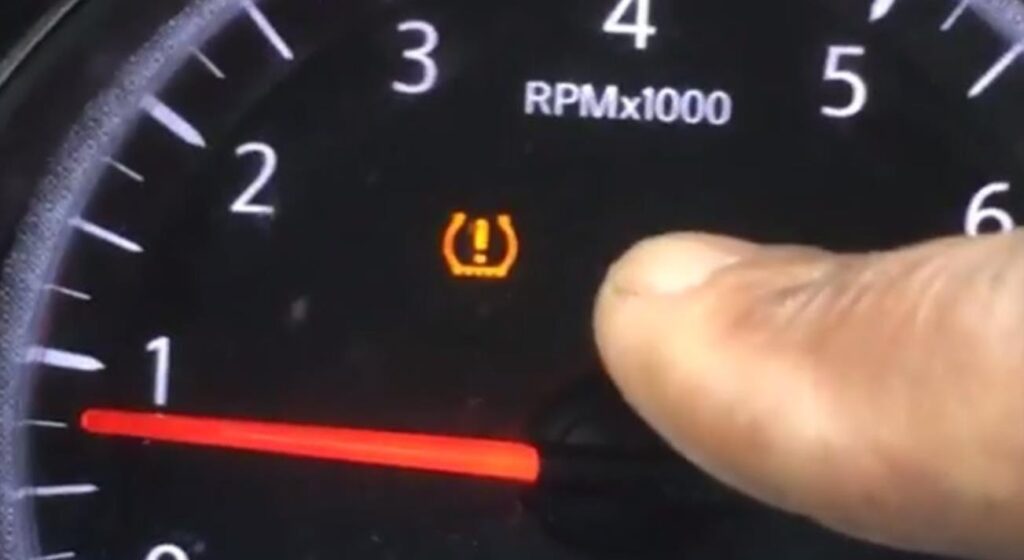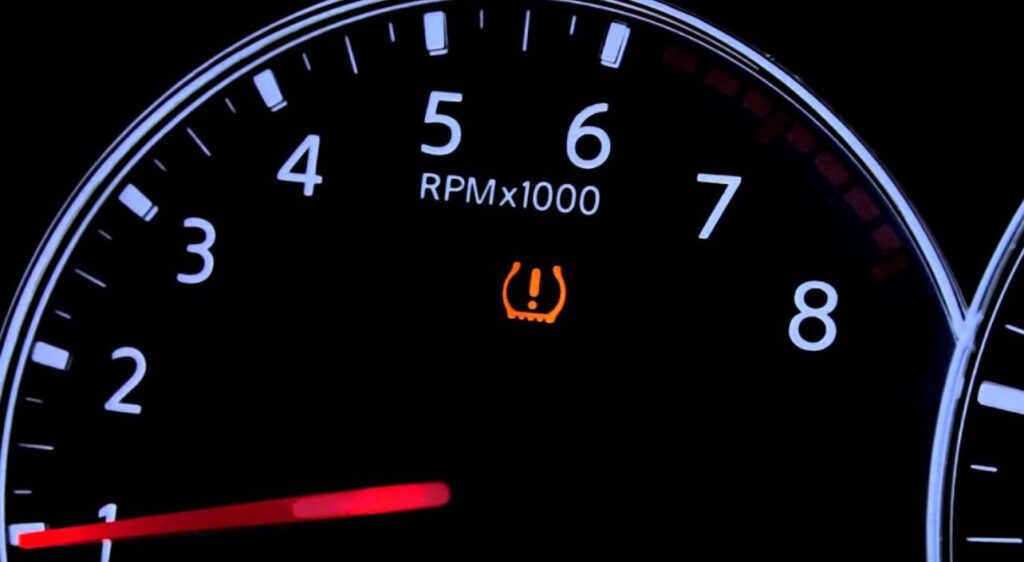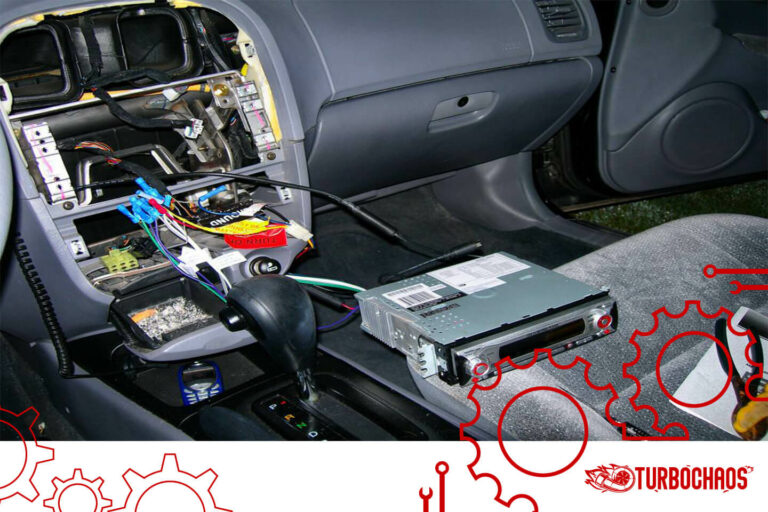Where Is The TPMS Reset Button On A Nissan Rogue? Answered
If you own a Nissan Rogue, you might have wondered, “Where Is The TPMS Reset Button On A Nissan Rogue?” This article will guide you through the process of locating and using the Tire Pressure Monitoring System (TPMS) reset button in your Nissan Rogue.
Key Takeaways
- Location of TPMS Reset Button: Located on the dash, near the steering wheel.
- Alternative Methods: If your Nissan Rogue doesn’t have a TPMS reset button, you can still reset the system.
- Importance: Regularly check your tire pressure to avoid potential problems.
Where Is The TPMS Reset Button On A Nissan Rogue?
The TPMS reset button is conveniently located on the dash, near the steering wheel. To reset the system, press and hold the button for a few seconds. The light will blink and then turn off, indicating that the system has been reset.

What Does TPMS Mean?
TPMS stands for Tire Pressure Monitoring System. It’s an automated system integrated into modern vehicles, including the Nissan Rogue, to monitor the air pressure inside the tires.
The primary function of TPMS is to alert the driver when tire pressure is too low or too high. This is crucial because improper tire pressure can lead to various issues such as reduced fuel efficiency, poor handling, and even tire blowouts.

The TPMS operates through sensors located in each tire that send real-time data to the vehicle’s computer system. When the tire pressure falls below or rises above the recommended range, the TPMS triggers a warning light on the dashboard.
This alert allows the driver to take immediate action, either by inflating or deflating the tires, thereby ensuring optimal driving conditions and increased road safety.
Alternative Methods for Resetting TPMS
If your Nissan Rogue doesn’t have a dedicated TPMS reset button, you’re not out of options. There are alternative methods to reset the Tire Pressure Monitoring System, ensuring that it continues to function correctly.
One common method is the “relearn procedure,” which involves deflating and inflating the tires in a specific sequence to reset the system.
To initiate the relearn procedure, first, make sure all tires are inflated to the recommended PSI. Turn the ignition key to the “ON” position but don’t start the engine.
Then, starting with the front-left tire, deflate it for about five seconds before inflating it back to the recommended pressure.
Repeat this process for the front-right, rear-right, and rear-left tires in that order. Once completed, turn the ignition off and then back on; the TPMS light should blink three times, indicating a successful reset.
Another alternative is to use an OBD-II scanner that has TPMS capabilities. Connect the scanner to the OBD-II port usually located under the dashboard near the steering wheel.
Navigate through the scanner’s menu to find the TPMS settings and follow the on-screen instructions to reset the system.
Importance of TPMS in Nissan Rogue
The Tire Pressure Monitoring System (TPMS) in a Nissan Rogue is far more than just a convenient feature; it’s a critical safety tool designed to keep you and your passengers safe.
One of the primary benefits of TPMS is its ability to alert you to low tire pressure, which can be a significant safety risk.
Low tire pressure can lead to decreased vehicle stability, poor handling, and even tire blowouts, especially when driving at high speeds or in challenging conditions.

Moreover, TPMS plays a vital role in enhancing fuel efficiency. Properly inflated tires have less rolling resistance, which means the engine doesn’t have to work as hard to move the vehicle.
According to the US Department of Energy, you can improve your gas mileage by up to 3% by keeping your tires inflated to the proper pressure.
That’s not just good for your wallet; it’s also beneficial for the environment by reducing your carbon footprint.
How Does TPMS Work?
The Tire Pressure Monitoring System (TPMS) in a Nissan Rogue operates through a series of sensors located inside each tire. These sensors continuously monitor the air pressure and send this data to the vehicle’s onboard computer.
When the tire pressure falls below or rises above the manufacturer’s recommended levels, the TPMS triggers a warning light on the dashboard.
This is your cue to take immediate action, either by inflating or deflating the tires to the correct pressure.

In some advanced models, the TPMS provides more than just a warning light. It can display real-time tire pressure readings on the vehicle’s digital dashboard or infotainment system.
This feature allows you to monitor the exact pressure in each tire, giving you a more comprehensive understanding of your vehicle’s condition.
Some systems even offer temperature readings, alerting you to potential overheating issues that could lead to tire failure.
Common Issues and Troubleshooting
While the Tire Pressure Monitoring System (TPMS) in a Nissan Rogue is generally reliable, it’s not immune to issues. One common problem is the TPMS light staying on even after you’ve inflated the tires to the correct pressure.
This could be due to a variety of reasons, such as a faulty sensor, a leak in one of the tires, or even a malfunction in the TPMS module itself.
Another issue you might encounter is the TPMS light flashing, which usually indicates a malfunction in the system.
This could be due to a sensor battery running low, sensor damage due to road conditions, or even interference from other electronic devices in the vehicle.
In such cases, a diagnostic scan using an OBD-II scanner with TPMS capabilities can help identify the specific issue.
If you’re experiencing persistent issues with your TPMS, it’s advisable to consult a professional for a thorough inspection and diagnosis.
Sometimes, a simple sensor replacement can resolve the issue, while other times it may require recalibrating the entire system.
Ignoring TPMS issues is not recommended, as it compromises both your safety and the vehicle’s performance.
Therefore, if you encounter any problems, it’s best to address them promptly to ensure a safe and smooth driving experience.
New Aspects Of TPMS In Nissan Rogue

Advanced TPMS Features in Newer Nissan Rogue Models
Newer models of the Nissan Rogue come equipped with advanced TPMS features that not only monitor tire pressure but also provide real-time data on tire temperature.
This is especially useful for those who often drive in extreme weather conditions. The advanced TPMS can be a lifesaver, alerting you to potential issues before they become major problems.
TPMS and Fuel Efficiency
Did you know that proper tire pressure can significantly impact your Nissan Rogue’s fuel efficiency? Studies have shown that for every 1 PSI drop in all four tires, fuel efficiency can decrease by up to 0.3%.
TPMS ensures that you’re always driving at optimal tire pressure, thereby saving you money at the gas pump in the long run.
TPMS Sensor Battery Life
The TPMS sensors in your Nissan Rogue are battery-powered. These batteries usually last around 5-10 years, but this can vary depending on usage and driving conditions.
When the battery starts to run low, the TPMS system will usually alert you, giving you ample time to replace the sensor.
TPMS and Seasonal Tire Changes
If you live in an area with seasonal weather changes, you might be switching between summer and winter tires. It’s crucial to recalibrate your TPMS system each time you change your tires. Failing to do so can result in inaccurate readings, which could potentially lead to unsafe driving conditions.
TPMS and Off-Roading
For those who love off-roading adventures, the TPMS can be both a boon and a bane. While it helps monitor tire pressure during rough terrains, the system might give frequent alerts due to the constant pressure changes.
Some advanced settings allow you to adjust the TPMS sensitivity, making it more suitable for off-road conditions.
Legal Requirements and TPMS
In many countries, having a functional TPMS is not just a safety feature but a legal requirement.
Failure to maintain a working TPMS can result in hefty fines and may even affect your vehicle’s insurance. Always ensure your TPMS is in good working condition to stay compliant with the law.
How To Reset Nissan Rogue Low Tire Pressure Light?
Resetting the low tire pressure light in your Nissan Rogue involves a series of steps that are relatively straightforward. Here’s a detailed guide to help you through the process:

Step 1: Check Tire Pressure
Before attempting to reset the TPMS light, make sure all your tires are inflated to the recommended PSI levels. You can find this information in your vehicle’s owner’s manual or on a sticker usually located on the driver’s side door jamb.
Step 2: Locate the TPMS Reset Button
The TPMS reset button is typically located on the left side of the steering wheel on the dashboard. If you’re having trouble finding it, consult your owner’s manual for its exact location.
Step 3: Turn the Ignition On
Insert the key into the ignition and turn it to the “ON” position, but don’t start the engine. This will power up the vehicle’s electrical system, including the TPMS.
Step 4: Press and Hold the TPMS Reset Button
Press and hold the TPMS reset button until the low tire pressure light blinks three times. This usually takes about three to five seconds.
Step 5: Drive the Vehicle
After the light blinks, start the engine and drive your Nissan Rogue for at least 10 minutes at a speed of 30 mph or more. This allows the TPMS to recalibrate and should turn off the low tire pressure light.
Step 6: Confirm TPMS Light is Off
Once you’ve driven for a sufficient amount of time, the TPMS light should turn off, confirming that the system has been reset. If the light remains on, repeat the process or consult a professional.
How Do You Reset TPMS If There Is No Button?
If your Nissan Rogue doesn’t have a dedicated TPMS reset button, you can still reset the system using alternative methods. Here’s a step-by-step guide to help you navigate this process:

Step 1: Verify Tire Pressure
Firstly, ensure that all your tires are inflated to the manufacturer’s recommended PSI levels. You can find this information in your vehicle’s owner’s manual or on a sticker usually located on the driver’s side door jamb.
Step 2: Turn On the Ignition
Insert the key into the ignition and turn it to the “ON” position without starting the engine. This will activate the vehicle’s electrical system, including the TPMS.
Step 3: Use the Relearn Procedure
The “relearn procedure” involves deflating and inflating the tires in a specific sequence. Start with the front-left tire, deflate it for about five seconds, and then inflate it back to the recommended pressure. Repeat this process for the front-right, rear-right, and rear-left tires in that order.
Step 4: Turn Off and On the Ignition
Once you’ve completed the relearn procedure, turn the ignition off and then back on. The TPMS light should blink three times, indicating that the system has been successfully reset.
Step 5: Drive the Vehicle
Start the engine and drive your Nissan Rogue for at least 10 minutes at a speed of 30 mph or more. This allows the TPMS to recalibrate and should turn off the low tire pressure light.
Step 6: Confirm Reset
After driving for the required time, the TPMS light should turn off. If it doesn’t, you may need to repeat the process or consult a professional for further diagnosis.
Optional: Use an OBD-II Scanner
If the above methods don’t work, you can use an OBD-II scanner with TPMS capabilities. Connect the scanner to the OBD-II port, usually located under the dashboard near the steering wheel.
Navigate through the scanner’s menu to find the TPMS settings and follow the on-screen instructions to reset the system.
How To Reset TPMS In Any Vehicle?
Resetting the Tire Pressure Monitoring System (TPMS) can vary from one vehicle to another, but there are some general methods that are commonly used across different makes and models. Here’s a comprehensive guide to help you reset the TPMS in virtually any vehicle:
Step 1: Check Tire Pressure
The first step is to ensure that all tires are inflated to the recommended PSI levels. You can find this information in the vehicle’s owner’s manual or on a sticker usually located on the driver’s side door jamb.
Step 2: Turn On the Ignition
Insert the key into the ignition and turn it to the “ON” position without starting the engine. This will activate the vehicle’s electrical system, including the TPMS.
Step 3: Locate the TPMS Reset Button (If Available)
If your vehicle has a TPMS reset button, it’s typically located near the steering wheel or under the dashboard. Press and hold this button until the TPMS light blinks three times on the dashboard.
Step 4: Use the Relearn Procedure (If No Button)
If there’s no TPMS reset button, you can use the “relearn procedure.” This involves deflating and inflating each tire in a specific sequence, usually starting with the front-left tire.
Deflate it for about five seconds and then inflate it back to the recommended pressure. Repeat for the remaining tires.
Step 5: Drive the Vehicle
After resetting the TPMS, you’ll need to drive the vehicle for at least 10 minutes at a speed of 30 mph or more. This allows the system to recalibrate.
Step 6: Confirm Reset
After driving, the TPMS light should turn off, confirming that the system has been successfully reset. If it doesn’t, you may need to repeat the process or consult a professional.
Optional: Use an OBD-II Scanner
Some modern vehicles allow TPMS reset through an OBD-II scanner. Connect the scanner to the OBD-II port, usually located under the dashboard. Navigate to the TPMS settings on the scanner’s menu and follow the on-screen instructions.
Conclusion
In summary, the TPMS reset button in a Nissan Rogue is usually located on the dash, near the steering wheel. Knowing how to reset it and understanding its importance can save you from potential tire-related issues down the road.
From enhancing fuel efficiency to complying with legal requirements, understanding your TPMS can offer numerous benefits. Make sure to keep it in optimal condition for a safer and more efficient driving experience.
Top FAQ’s
Why is my tire pressure monitoring system light on?
The TPMS light usually illuminates due to low or high tire pressure. It’s crucial to adjust the tire pressure to the recommended levels as soon as possible. However, a faulty TPMS sensor can also trigger the light. In such cases, it’s advisable to get the sensor inspected and replaced if necessary.
How to check the tire pressure monitoring system?
Your Nissan Rogue’s TPMS will alert you through a “low pressure” light on your dashboard. To check the specific air pressure, you can pull up the TPMS screen on your vehicle’s digital display if it’s equipped with one. Alternatively, you can use a tire pressure gauge to manually check the pressure at the tire’s valve stem.
What happens if I ignore the TPMS light?
Ignoring the TPMS light is not advisable as it can lead to decreased fuel efficiency, changes in vehicle handling, and even a greater risk of tire puncture or blowout. It’s essential to address the issue as soon as the light comes on to ensure your safety and that of others on the road.
Can atmospheric changes affect the TPMS light?
Yes, changes in atmospheric pressure, like a cold morning, can temporarily trigger the TPMS light. However, the light should turn off after a short period of driving once the tire pressure stabilizes.

Matt Rex brings 12 years of specialized automotive expertise, holding a professional degree in Automotive Engineering Technology. As the founder of Turbochaos, he delivers comprehensive diagnostic services, performance optimization, and fleet maintenance solutions, backed by advanced certifications in hybrid/electric systems and ADAS technology. Its innovative methodologies have earned industry recognition while maintaining a 98% customer satisfaction rate.







